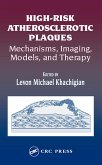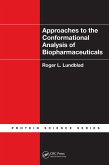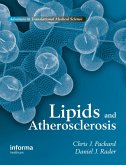High-Risk Atherosclerotic Plaques (eBook, PDF)
Mechanisms, Imaging, Models, and Therapy
Redaktion: Khachigian, Levon Michael
58,95 €
58,95 €
inkl. MwSt.
Sofort per Download lieferbar

29 °P sammeln
58,95 €
Als Download kaufen

58,95 €
inkl. MwSt.
Sofort per Download lieferbar

29 °P sammeln
Jetzt verschenken
Alle Infos zum eBook verschenken
58,95 €
inkl. MwSt.
Sofort per Download lieferbar
Alle Infos zum eBook verschenken

29 °P sammeln
High-Risk Atherosclerotic Plaques (eBook, PDF)
Mechanisms, Imaging, Models, and Therapy
Redaktion: Khachigian, Levon Michael
- Format: PDF
- Merkliste
- Auf die Merkliste
- Bewerten Bewerten
- Teilen
- Produkt teilen
- Produkterinnerung
- Produkterinnerung

Bitte loggen Sie sich zunächst in Ihr Kundenkonto ein oder registrieren Sie sich bei
bücher.de, um das eBook-Abo tolino select nutzen zu können.
Hier können Sie sich einloggen
Hier können Sie sich einloggen
Sie sind bereits eingeloggt. Klicken Sie auf 2. tolino select Abo, um fortzufahren.

Bitte loggen Sie sich zunächst in Ihr Kundenkonto ein oder registrieren Sie sich bei bücher.de, um das eBook-Abo tolino select nutzen zu können.
Vulnerable plaque development is the result of a complex series of molecular and cellular events involving inflammation, apoptosis, rupture, and thrombosis. A detailed understanding of the mechanisms underlying the development of high-risk plaques, along with the ability to visualize and diagnose these vulnerable lesions, will lead to the effective
- Geräte: PC
- mit Kopierschutz
- eBook Hilfe
- Größe: 11.81MB
Andere Kunden interessierten sich auch für
![High-Risk Atherosclerotic Plaques (eBook, ePUB) High-Risk Atherosclerotic Plaques (eBook, ePUB)]() High-Risk Atherosclerotic Plaques (eBook, ePUB)58,95 €
High-Risk Atherosclerotic Plaques (eBook, ePUB)58,95 €![Biomolecular Thermodynamics (eBook, PDF) Biomolecular Thermodynamics (eBook, PDF)]() Douglas BarrickBiomolecular Thermodynamics (eBook, PDF)113,95 €
Douglas BarrickBiomolecular Thermodynamics (eBook, PDF)113,95 €![Approaches to the Conformational Analysis of Biopharmaceuticals (eBook, PDF) Approaches to the Conformational Analysis of Biopharmaceuticals (eBook, PDF)]() Roger L. LundbladApproaches to the Conformational Analysis of Biopharmaceuticals (eBook, PDF)73,95 €
Roger L. LundbladApproaches to the Conformational Analysis of Biopharmaceuticals (eBook, PDF)73,95 €![Carbon Monoxide and Cardiovascular Functions (eBook, PDF) Carbon Monoxide and Cardiovascular Functions (eBook, PDF)]() Carbon Monoxide and Cardiovascular Functions (eBook, PDF)246,95 €
Carbon Monoxide and Cardiovascular Functions (eBook, PDF)246,95 €![Carbon Monoxide Toxicity (eBook, PDF) Carbon Monoxide Toxicity (eBook, PDF)]() Carbon Monoxide Toxicity (eBook, PDF)63,95 €
Carbon Monoxide Toxicity (eBook, PDF)63,95 €![Lipids and Atherosclerosis (eBook, PDF) Lipids and Atherosclerosis (eBook, PDF)]() Chris J. PackardLipids and Atherosclerosis (eBook, PDF)172,95 €
Chris J. PackardLipids and Atherosclerosis (eBook, PDF)172,95 €![Kidney (eBook, PDF) Kidney (eBook, PDF)]() Kidney (eBook, PDF)52,95 €
Kidney (eBook, PDF)52,95 €-
-
-
Vulnerable plaque development is the result of a complex series of molecular and cellular events involving inflammation, apoptosis, rupture, and thrombosis. A detailed understanding of the mechanisms underlying the development of high-risk plaques, along with the ability to visualize and diagnose these vulnerable lesions, will lead to the effective
Dieser Download kann aus rechtlichen Gründen nur mit Rechnungsadresse in A, B, BG, CY, CZ, D, DK, EW, E, FIN, F, GR, HR, H, IRL, I, LT, L, LR, M, NL, PL, P, R, S, SLO, SK ausgeliefert werden.
Produktdetails
- Produktdetails
- Verlag: Taylor & Francis eBooks
- Seitenzahl: 224
- Erscheinungstermin: 20. Dezember 2004
- Englisch
- ISBN-13: 9781420037883
- Artikelnr.: 53263313
- Verlag: Taylor & Francis eBooks
- Seitenzahl: 224
- Erscheinungstermin: 20. Dezember 2004
- Englisch
- ISBN-13: 9781420037883
- Artikelnr.: 53263313
- Herstellerkennzeichnung Die Herstellerinformationen sind derzeit nicht verfügbar.
Professor Levon Michael Khachigian (BSc(Hons), PhD, DSc) is a Principal Research Fellow of the National Health and Medical Research Council of Australia and Head of the Transcription and Gene Targeting Laboratory at The Centre for Vascular Research, University of New South Wales and Prince of Wales Hospital, Sydney. His research, encompassed in over 100 journal articles and book chapters, has greatly increased our understanding of the fundamental transcriptional mechanisms that led to the inappropriate expression of harmful genes in cells of the artery wall. It has also led to his generation of novel DNA-based drugs that block arterial renarrowing after balloon angioplasty in a variety of experimental models. More recently, he has been unravelling the mechanisms behind tumor growth control and other neovascular pathologies by inhibiting angiogenesis. Professor Khachigian has been a major contributor to the broader workings of science on matters of policy, advocacy, consultancy, peer-review, mentorship, and societal service. For example, he is National Executive Director and President-Elect of the Australian Society for Medical Research, and Immediate-Past President of the Australian Vascular Biology Society. He has served on numerous grant review, fellowship, and policy formulation panels for the National Health and Medical Research Council of Australia and the National Heart Foundation of Australia. He sits on the editorial boards of five international journals. Professor Khachigian has won many highly competitive awards for innovative research including the Commonwealth Health Minister's Award for Excellence in Health and Medical Research, the Gottschalk Award from the Australian Academy of Science, Eureka Prize for Scientific Research from the Australian Museum, RT Hall Prize from the Cardiac Society of Australia and New Zealand, AMGEN Medical Researcher Award, Eppendorf Award for the Young Australian Researcher, Quantum Scientific Research Award, Young Tall Poppy Award, and numerous named research awards for research excellence from the Heart Foundation of Australia. Professor Khachigian received his BSc with first-class honors in biochemistry, and PhD in cell and molecular biology from the University of New South Wales, then studied transcriptional control in the Department of Pathology, Brigham and Women's Hospital, Harvard Medical School. In 2004, he was awarded a DSc in vascular pathobiology and translational research from the University of New South Wales.
Foreword. Cellular and Molecular Mechanisms of Plaque Rupture. Apoptosis
and Plaque Vulnerability. Animal Models of Vulnerable Plaque. Diagnosis of
Vulnerable Plaques in the Cardiac Catheterization Laboratory. Imaging of
the High Risk Atherosclerotic Plaque by Intravascular Ultrasound: Focal
Assessment of Morphology and Vulnerability or Systemic Assessment of
Disease Burden and Activity? Optical Coherence Tomography for Detection of
Vulnerable Plaque. Magnetic Resonance Imaging of "High Risk" Plaque.
Nuclear Imaging of the Vulnerable Plaque: Single Photon Emission Computed
Tomography (SPECT) and Positron Emission Tomography (PET). Identification
of the Vulnerable Plaque: The Role of Thermography. Treatment of Vulnerable
Plaque: Current and Future Strategies.
and Plaque Vulnerability. Animal Models of Vulnerable Plaque. Diagnosis of
Vulnerable Plaques in the Cardiac Catheterization Laboratory. Imaging of
the High Risk Atherosclerotic Plaque by Intravascular Ultrasound: Focal
Assessment of Morphology and Vulnerability or Systemic Assessment of
Disease Burden and Activity? Optical Coherence Tomography for Detection of
Vulnerable Plaque. Magnetic Resonance Imaging of "High Risk" Plaque.
Nuclear Imaging of the Vulnerable Plaque: Single Photon Emission Computed
Tomography (SPECT) and Positron Emission Tomography (PET). Identification
of the Vulnerable Plaque: The Role of Thermography. Treatment of Vulnerable
Plaque: Current and Future Strategies.
Foreword. Cellular and Molecular Mechanisms of Plaque Rupture. Apoptosis
and Plaque Vulnerability. Animal Models of Vulnerable Plaque. Diagnosis of
Vulnerable Plaques in the Cardiac Catheterization Laboratory. Imaging of
the High Risk Atherosclerotic Plaque by Intravascular Ultrasound: Focal
Assessment of Morphology and Vulnerability or Systemic Assessment of
Disease Burden and Activity? Optical Coherence Tomography for Detection of
Vulnerable Plaque. Magnetic Resonance Imaging of "High Risk" Plaque.
Nuclear Imaging of the Vulnerable Plaque: Single Photon Emission Computed
Tomography (SPECT) and Positron Emission Tomography (PET). Identification
of the Vulnerable Plaque: The Role of Thermography. Treatment of Vulnerable
Plaque: Current and Future Strategies.
and Plaque Vulnerability. Animal Models of Vulnerable Plaque. Diagnosis of
Vulnerable Plaques in the Cardiac Catheterization Laboratory. Imaging of
the High Risk Atherosclerotic Plaque by Intravascular Ultrasound: Focal
Assessment of Morphology and Vulnerability or Systemic Assessment of
Disease Burden and Activity? Optical Coherence Tomography for Detection of
Vulnerable Plaque. Magnetic Resonance Imaging of "High Risk" Plaque.
Nuclear Imaging of the Vulnerable Plaque: Single Photon Emission Computed
Tomography (SPECT) and Positron Emission Tomography (PET). Identification
of the Vulnerable Plaque: The Role of Thermography. Treatment of Vulnerable
Plaque: Current and Future Strategies.







